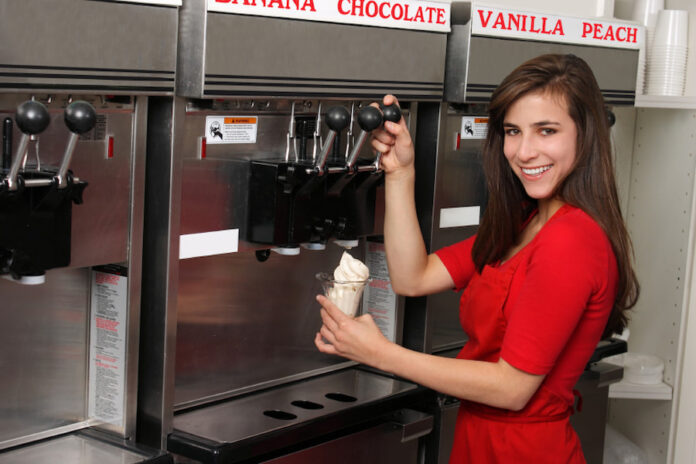Maintaining a soft-serve machine is critical for its performance and hygiene. Routine cleaning and upkeep not only extend the machine’s life but also ensure the ice cream produced meets high-quality standards. This guide presents a detailed process for effectively cleaning and maintaining a soft-serve ice cream machine. Ensuring proper cleaning protocols is vital to prevent the accumulation of harmful elements like bacteria and mould, which could compromise the flavour and safety of the ice cream. Ignoring these cleaning routines might result in machine malfunctions or breakdowns, leading to business disruptions and potential losses.
It’s essential to prioritise regular maintenance to avoid any operational hiccups and maintain the quality of your product. Incorporating specialised kits like the X39455 brush kit fortaylor Soft Serve machines. Tune Up Kit Model 142 can significantly aid in streamlining the maintenance process, providing specific tools and parts necessary for efficient upkeep. This kit, designed to meet the machine’s needs, can simplify maintenance tasks and enhance the machine’s performance. By adhering to a diligent cleaning schedule and utilising specialised kits like the X25802 Tune Up Kit Model 142, businesses can ensure consistent production of safe and delicious soft-serve ice cream while safeguarding the longevity of their machines. Investing time and resources in proper maintenance is an investment in the quality of your product and the sustainability of your business.
Remove Everything Machine:
Empty the soft serve ice cream machine by removing and disposing of all the remaining ice cream. Ensure that the entire content within the machine is completely drained and discarded. This step is crucial to initiate the cleaning process effectively, removing any leftover ice cream to prepare for thorough cleaning and maintenance. Properly emptying the machine prevents cross-contamination and allows for a meticulous cleaning routine to be execute, ensuring hygiene and quality in subsequent ice cream production cycles.
Clean:
Begin the cleaning process by utilising the machine’s washing cycle to clean the tank thoroughly. Pay specific attention to the hopper and dispenser tip as these areas are susceptible to contamination during the refilling of the mix and dispensing of ice cream. Disassemble the machine according to the manufacturer’s guidelines and wash each part meticulously in a designated sink or bucket. Ensure every component in the front door and the beaters are properly cleaned to maintain hygiene and prevent any residue buildup.
Additionally, don’t overlook the exterior of the machine; wipe it down to remove any spills or residue that might have accumulated. This comprehensive cleaning approach ensures that not only the internal components but also the critical areas expose during ice cream dispensing are thoroughly sanitised, reducing the risk of contamination and maintaining the machine’s efficiency and hygiene standards.
Sanitise Properly:
Prepare the cleaning solution by mixing one packet of stern-sheen per barrel and initiate the machine’s clean/wash cycle for a minimum of one minute. It’s crucial to sanitise the machine thoroughly before introducing any product mix into the hopper for production. Stera-Sheen, an NSF-certified final rinse sanitiser, eliminates the need for a water rinse after use. After completely purging the cleaning solution from the system, pour the product mix into the machine’s hoppers. Draw out a few ounces of the product mix to ensure the removal of any residual cleaning solution remaining in the machine. This meticulous process ensures that the machine is sanitised and free from any cleaning agents before proceeding to freeze the product for serving, maintaining optimal hygiene standards.
Inspect, Soak, Scrub, and Dry All the Parts:
Ensure the soft serve ice cream machine’s moving parts are thoroughly clean through the manufacturer’s provided washing cycle or manually using a designated handled scrub brush. Utilise cleaning solutions explicitly formulated for commercial food machines to maintain hygiene standards. Some machine components may be suitable for cleansing in a food-safe sanitiser, adhering to safety measures. Prioritise safety by meticulously inspecting each disassembled part for any signs of wear or damage before immersing them in hot, soapy water for thorough cleaning. After rinsing the parts with clean water once the temperature has cooled, allow them to air dry completely. This critical step in the maintenance process ensures the removal of contaminants and residues, promoting a clean and safe environment for the machine’s operation and the production of high-quality soft-serve ice cream.
Regular maintenance checks:
Regular maintenance checks are vital for optimal performance. Replace worn or loosely fitting O-rings and seals to prevent any potential leaks or inefficiencies in the machine’s operation. Adequate air ventilation, maintaining a one-foot space on both the left and right sides of the machine, ensures proper cooling and optimal functioning of the ice cream maker. Before cleaning the condenser, it’s crucial to disconnect the electrical power to avoid the risk of electrocution. This precautionary measure ensures safety during maintenance tasks involving electrical components. These routine checks and precautions not only maintain the machine’s efficiency but also uphold a safe working environment for those handling the equipment.
Conclusion:
Regular cleaning and maintenance are essential for a soft-serve machine efficiency and longevity. Following these outlined steps and adhering to manufacturer guidelines will not only maintain the machine’s performance but also uphold the quality and safety standards of the ice cream produced. Prioritising proper cleaning procedures ensures a delightful ice cream experience while extending the life of the machine. Visit Mag Mystery for more interesting blogs.



